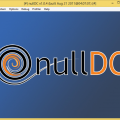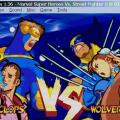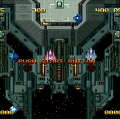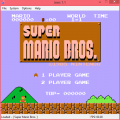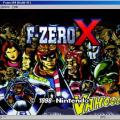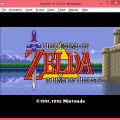- 0 replies
- 1,580 views
- Add Reply
- 6 replies
- 3,913 views
- Add Reply
- 0 replies
- 1,768 views
- Add Reply
DAPHNE v1.0 (beta) released

Arcade Laserdisc emulator
Yes, you read right... the next generation of Daphne is ready for testing.
This version features full, Digital Leisure approved, automatic downloads of Dragon's Lair, Dragon's Lair 2, Space Ace, and Thayer's Quest! No more dvd2daph, no more framefiles, no more configuration! Just select the game you want and click Start.
Windows, Linux and Mac OS X builds available.
>> Get them HERE.
Thanks to e-lation!
BitComet 0.84 released

BT client
v0.84 2007.02.08* GUI Improved: new task piece graph for both BT and HTTP, displaying detail file piece downloading state
* GUI Improved: enhanced video codec version detection for preview. the extra video codec check wizard is removed.
* GUI Improved: add clipboard monitor, which can be enabled in floating window context menu
* GUI Bugfix: fix the bug that fail to open torrent file during preview
* GUI Bugfix: fix the bug that the UPNP opeartion results are not displayed in statistics view
* GUI Bugfix: fix the bug that the floating window is not hide when hit boss key
* Core Bugfix: fix the bug that the uplading rate is too low in some situation
* Core Bugfix: fix the bug in the decode of GZIP data returned from HTTP server
NESCafe 0.706 released
Xfire 1.69 released

* Xfire is free, small, and easy to install* Keep track of when and where your friends are playing PC games, and join them with one click
* IM your friends from within games while you play
* Fast file download system with special game channels
* Powerful server browser
* Profile-based stats tracking.
* Voice chat
Release notes for 1.69 - February 8th, 2007
* Vastly increased speed of taking screenshots (Scroll Lock + S while playing a game).
* Added a sound when you take a screenshot in game.
* Added the capability for us to send system messages to users. We plan to use this to warn everyone about system restarts and updates.
* Added kill/death statistics to Quake 4; they are automatically added to your profile page.
* Increased the maximum number of favorite servers you can save to 100.
* Changed the tray icon and tooltip to indicate when you are not connected to Xfire.
* Fixed display problem in the Tools | Manage Screenshots dialog when you take screenshots while playing a game in a window.
* Improved the user interface while downloading Xfire updates (you will see this when version 1.70 is released).
* Added the ability to associate favorite games with your clan or guild (*beta*).
* Fixed game detection of Silkroad Online and Lineage II.
* New games supported: Titan Quest Immortal Throne, Supreme Commander Beta, Goonzu Online, 25 to Life, Battlestations Midway, Bad Day LA, Let's Ride! - Silver Buckle Stables, and James Bond 007 Nightfire.

